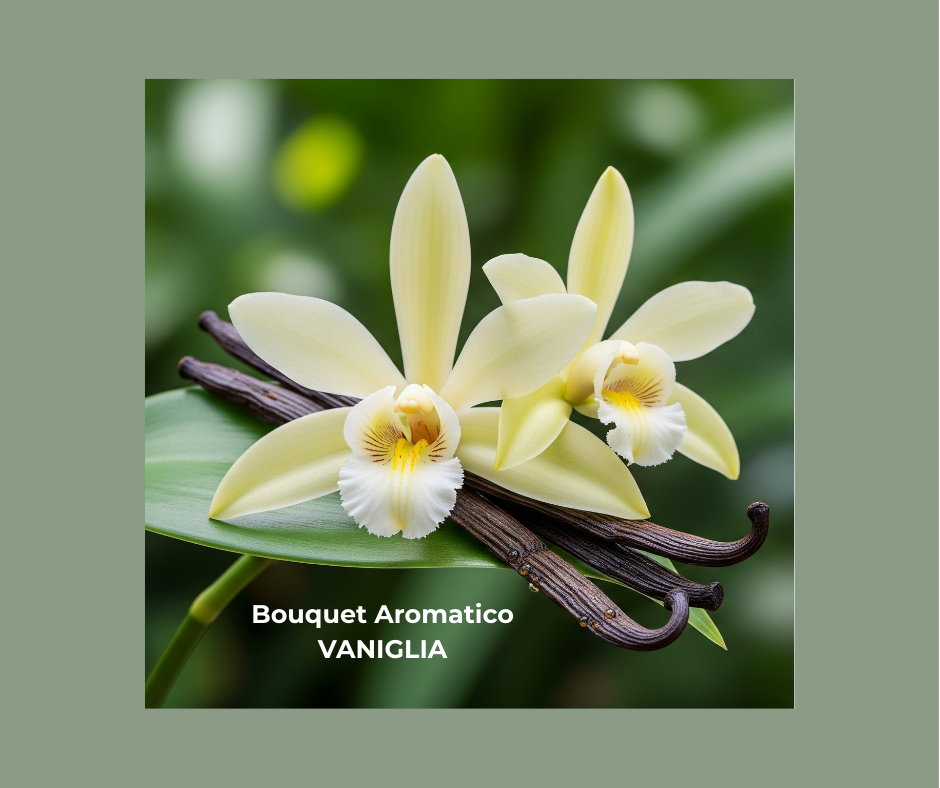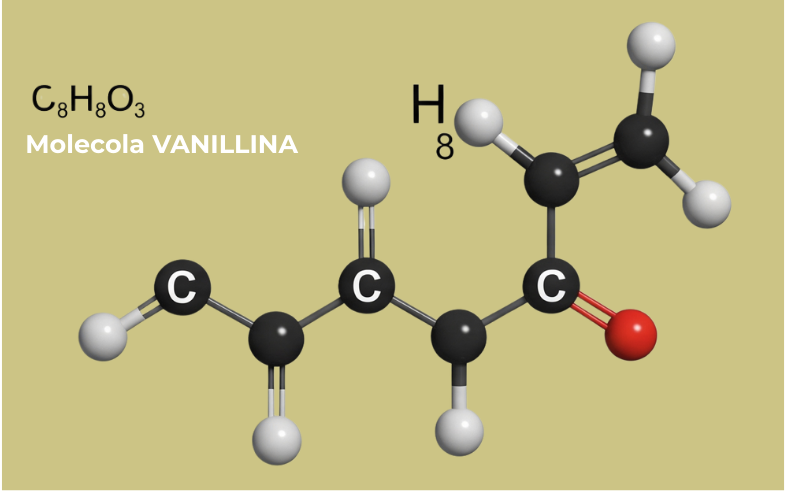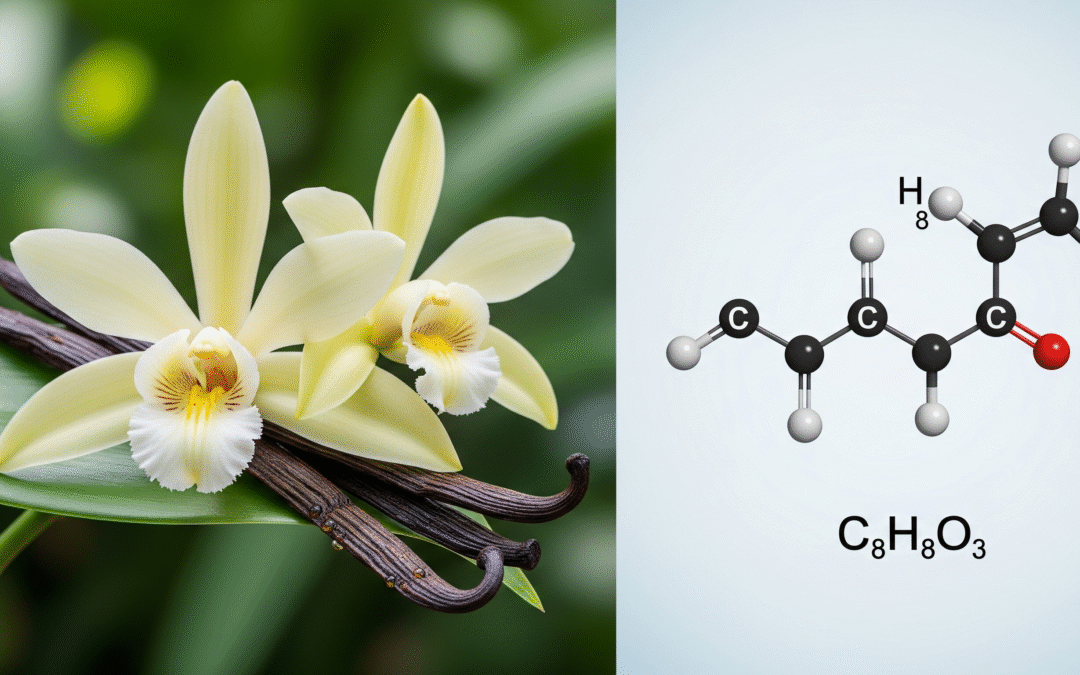The Biologist’s Technical Eye
Natural vanilla, extracted from the pods of the Vanilla planifolia orchid, is an extraordinarily rich aromatic phytocomplex. Its fragrance doesn’t come from a single molecule but from a bouquet of over 200 volatile compounds. The main component is vanillin (4-hydroxy-3-methoxybenzaldehyde), but it’s the synergy with secondary compounds like vanillic acid, piperonal, and cinnamic aldehydes that gives it the depth, with spicy, woody, and sometimes smoky notes that characterize its unique organoleptic profile. This complexity is the result of the pod’s ripening and enzymatic fermentation.

Unlike vanillin alone, natural vanilla is a flavor orchestra, composed of hundreds of aromatic compounds that create a unique and complex bouquet.
Synthetic vanillin, on the other hand, is the single molecule 4-hydroxy-3-methoxybenzaldehyde produced in a laboratory. Chemically, it is identical to the one found in the pod, but it stands alone. Industrial production sources include lignin (a waste polymer from the paper industry) or, more commonly, guaiacol (a petroleum derivative). There is also “bio-synthetic” vanillin, obtained from the fermentation of natural substrates like ferulic acid.

This is vanillin: the single molecule responsible for the characteristic vanilla aroma, which can be replicated synthetically.
In Simple Terms for the Passionate Artisan
Imagine listening to your favorite song. Natural vanilla is like hearing it played by a full orchestra. You can clearly hear the lead violin (the vanillin), but you also perceive the warmth of the cellos, the rhythm of the percussion, and the harmony of the woodwinds, creating an immersive and richly nuanced emotional experience. Every instrument, no matter how small, contributes to an unforgettable performance.
Synthetic vanillin is like hearing that same main melody played by a solo violin. The tune is correct, recognizable, and clean, but it lacks all the depth, body, and emotion that only the full orchestra can provide. It’s a direct, sweet, and straightforward aroma, but it’s ultimately flat and without surprises.
The Curiosity That Makes You Say “Wow!”
Did you know that one of the most surprising historical sources for synthesizing vanillin is castoreum? This is a secretion from the perineal glands of beavers, rich in phenolic compounds derived from their diet of tree bark. Although this method is almost entirely abandoned today for ethical and cost reasons, for many years the “natural” vanilla flavor in some food products literally came from a beaver’s backside!
As always, with Passion and Rigor,
Katia Oldani, Biologist Pastry Chef
Click here to Visit My YouTube Channel
For any information or to get in touch, CLICK HERE.


